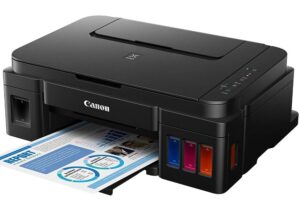Introduction: Decoding the Processor Puzzle
The heart of any computer lies in its processor, and choosing the right one can make or break your computing experience. With an overwhelming array of options available, selecting the ideal processor may seem like a daunting task. Fortunately, there’s a method to the madness. This article serves as your comprehensive guide to navigate the maze of processor choices, ensuring your new computer boasts the power and efficiency you desire.
Understand Your Computer’s Needs: Tailoring the Processor
Compatible Powerhouse: To embark on the journey of procuring the perfect processor, it’s crucial to understand your computer’s requirements. Begin by scrutinizing your computer’s motherboard and identifying its compatible socket. This sets the stage for the processors you can consider. Next, contemplate the applications your computer will handle. Whether it’s graphic-intensive tasks like video editing or the less demanding realms of web browsing, your processor choice should align with your usage patterns.
Ramifications of Overclocking: Delve deeper by gauging the need for overclocking. If you’re inclined to push your processor’s performance limits, opt for a processor with overclocking capabilities. This ensures seamless execution of resource-intensive tasks.
Identify Your Usage Type: Picking Performance Partners
Tailored Performance: Your computer’s intended use is a critical factor in selecting the right processor. Activities like gaming and graphic design demand robust processing power, necessitating processors with higher clock speeds and core counts. Conversely, if your computer’s tasks lean towards office productivity and casual browsing, a more budget-friendly processor could suffice.
Hyper-Threading’s Impact: Consider the presence of hyper-threading technology in your processor choice. Hyper-threading enhances multitasking capabilities by allowing simultaneous execution of tasks. Evaluate whether this feature aligns with your usage type to make an informed decision.
Consider Your Budget: Balancing Performance and Finances
Budget-Friendly Brilliance: Budget considerations play a pivotal role in your processor selection journey. While high-end processors may be tempting, mid-range options can often strike the ideal balance between performance and cost. Assess whether splurging on top-tier processors aligns with your usage needs or if a moderately priced option will deliver satisfactory results.
Future-Proofing Investment: Anticipate future upgrades and compatibility by opting for a processor that meets not only current but prospective needs. Investing a little extra upfront could save you from the hassle of costly upgrades down the line.
Check System Compatibility: Ensuring a Seamless Fit
Compatibility Check: Before proceeding further, verify your chosen processor’s compatibility with your motherboard’s socket and chipset. Neglecting this crucial step could lead to incompatibility issues that render your purchase useless.
Updated Drivers for Smooth Performance: Prior to finalizing your processor choice, ensure you have the necessary BIOS drivers installed. This ensures seamless compatibility and optimal performance of your new processor with the existing components.
Evaluate Processor Cores: Balancing Multitasking and Performance
Core Count and Performance: Processor cores dictate multitasking prowess and performance. A higher core count translates to better multitasking capabilities and improved performance for demanding tasks. Striking the right balance between core count and your system’s RAM capacity ensures optimal performance without unnecessary resource allocation.
Hyper-Threading’s Boost: Hyper-threading can significantly enhance performance by allowing cores to execute multiple threads simultaneously. If multitasking is a core component of your computing needs, factor in hyper-threading capabilities when making your selection.
Examine Cache Size: Optimizing Data Processing
Cache’s Role: Cache size plays a vital role in data processing efficiency. A larger cache size accelerates data retrieval and execution, resulting in enhanced overall performance. Pay attention to cache size while comparing different processor models to ensure your choice aligns with your needs.
Consider Clock Speed: Speeding Up Data Processing
Clock Speed’s Influence: Clock speed dictates the pace at which your processor processes instructions. A higher clock speed equates to faster processing. Consider both single-thread and multi-thread performance to ensure smooth operation during both single-task and multitask scenarios.
Balancing Architecture and Clock Speed: While clock speed is crucial, balance it with processor architecture. A higher clock speed on an inferior architecture might not deliver the desired results. Consider architecture alongside clock speed for an accurate performance evaluation.
Consider Hyper-Threading: Boosting Multitasking Efficiency
Multitasking Efficiency: Hyper-threading technology enables simultaneous execution of two tasks per core, enhancing multitasking efficiency. Evaluate whether your usage type demands such capabilities to make an informed decision about a processor’s hyper-threading support.
Research Processor Generations: Future-Proofing Performance
Generation Exploration: Researching processor generations sheds light on the latest advancements. Newer generations often offer enhanced performance, but at a potentially higher cost. Assess each generation’s features and specs to determine the best fit for your requirements.
Manufacturer Support and Warranty: Investigate manufacturer support and warranty extensions for older processor models. You might find excellent performance at reduced prices or favorable warranty terms that impact your final decision.
Research Processor Models: Delving into Specifications
Model Delineation: Researching processor models within your chosen generation is essential. Scrutinize specifications like core count, clock speed, cache size, and integrated graphics performance. Each specification contributes to your computer’s overall performance.
Comparative Analysis: Conduct a side-by-side comparison of different models within your chosen generation. This in-depth analysis allows you to discern the optimal processor for your system’s requirements.
Conclusion: Crafting the Ideal Computing Powerhouse
In a world inundated with processor options, knowledge is your greatest ally. By understanding your computer’s needs, identifying your usage type, considering your budget, ensuring compatibility, evaluating core count, examining cache size and clock speed, assessing hyper-threading capabilities, researching processor generations, and researching processor models, you’re well-equipped to make an informed processor selection. A thoughtful decision today ensures your computer’s power and efficiency well into the future.
Pritish Kumar Halder is a seasoned tech enthusiast. With a background in computer engineering, Pritish Kumar Halder has become a trusted voice in the field. His passion for breaking down complex concepts into understandable insights has made him a go-to resource for those seeking guidance in choosing the right processor.











